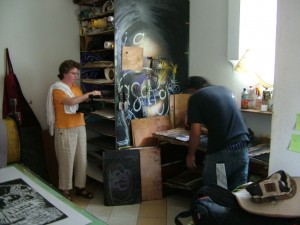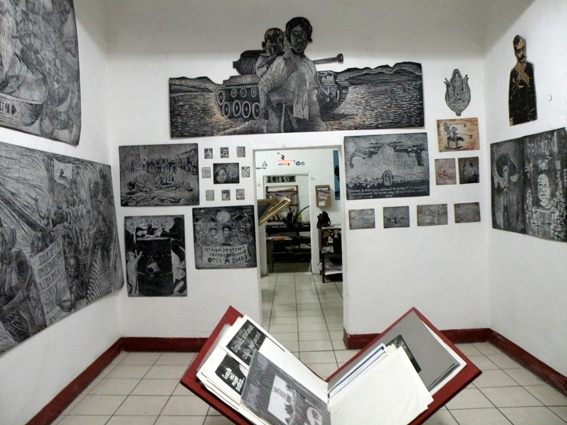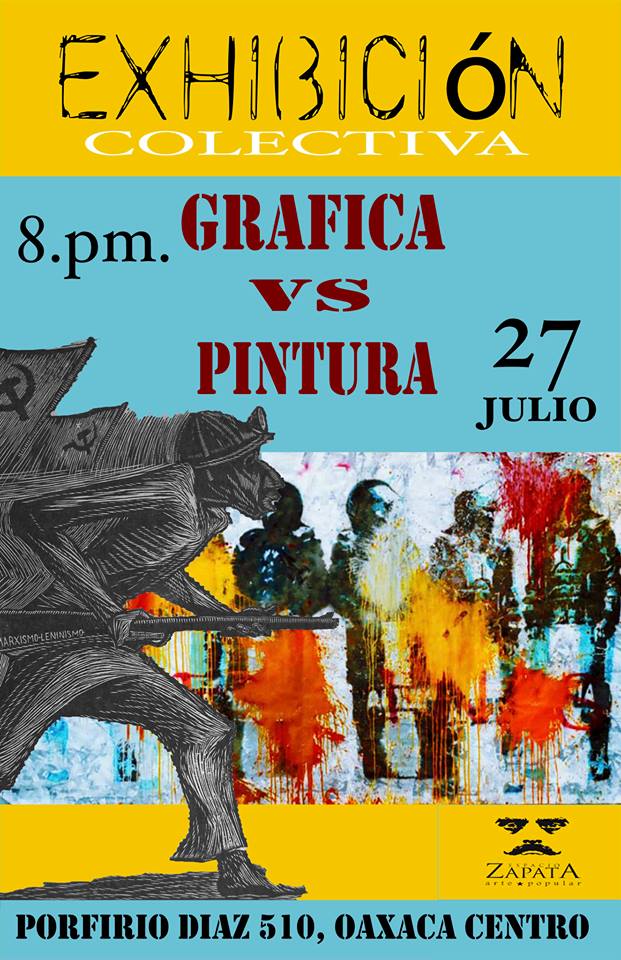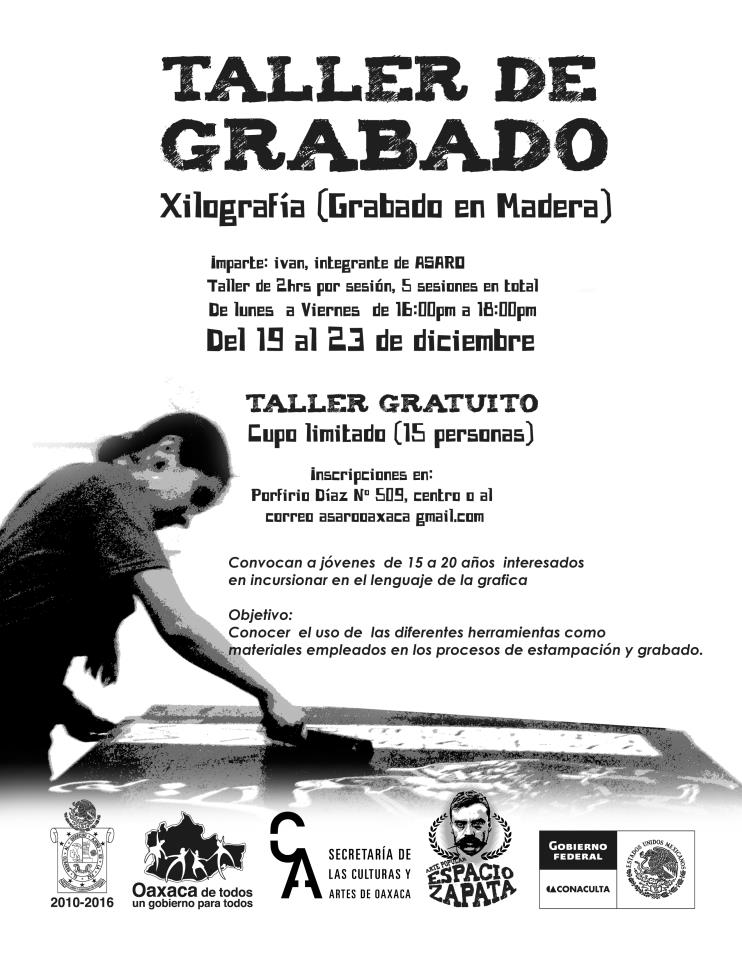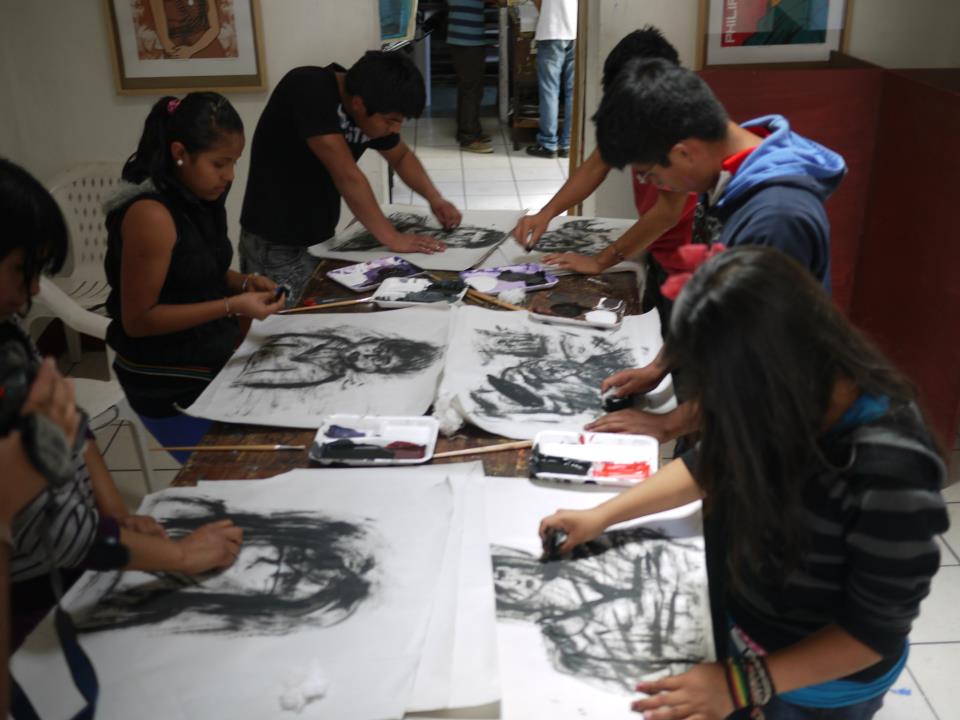It was during a visit to Oaxaca in 2006, in the midst of a social movement that got its start as a teachers’ protest for better educational resources, when we first learned about ASARO, the Asamblea de Artistas Revolucionarios de Oaxaca. This artists’ collective has occupied various studio spaces, clandestine at first and now public. While the artists continue to make street art, they also sell prints, t-shirts, and more. Members of the collective now travel to Europe, South America, the U.S., and across Mexico to show their work and offer workshops.

A pasted paper graphic, with an ASARO signature, pointing to Arab resistance movements. (Photo, ASARO)
In 2007 one of our favorite night spots, La Nueva Babel, had allowed ASARO to paint on their walls.
In 2009 we visited the Espacio Zapata (studio space of ASARO), which was then on Fiallo street, to interview artists and film their work. “Zapata” is a reference to the famous Mexican revolutionary, Emiliano Zapata, who was the leader in the 1910-1919 struggle most involved in land reform, returning land ownership to those who work it. Zapata came from the state of Morelos and knew some Nahuatl, the indigenous language spoken most in central Mexico.
Zapata is a figure who appears often in art produced by the ASARO group. He is sometimes made into a punk figure in an effort to modernize him and make him more appealing to youth of today. Below, we see him in a mural with Benito Juárez, who was not his contemporary, but who was a mid-nineteenth-century Mexican president, the first who was indigenous (Zapotec), and he came from Oaxaca.

Mural in progress with historic figures, Zapata (on our right) and Juárez (on the left). (Photo, ASARO collective)
Here is ASARO’s own blogspot, which includes a section on antecedents, along with posters, graphics, paintings, press, publications, stencils, and videos. We will visit the current studio space of ASARO, and we hope to take in the studios of other groups, such as Arte Jaguar or Lapiztola (the latter is a play on the words “lapiz,” pencil, and “pistola,” pistol.
Please also see our page on Protest/Street Art. Also, try Googling, for example “ASARO Oaxaca,” “artejaguar,” or “lapiztola,” and then click to see “images.”







